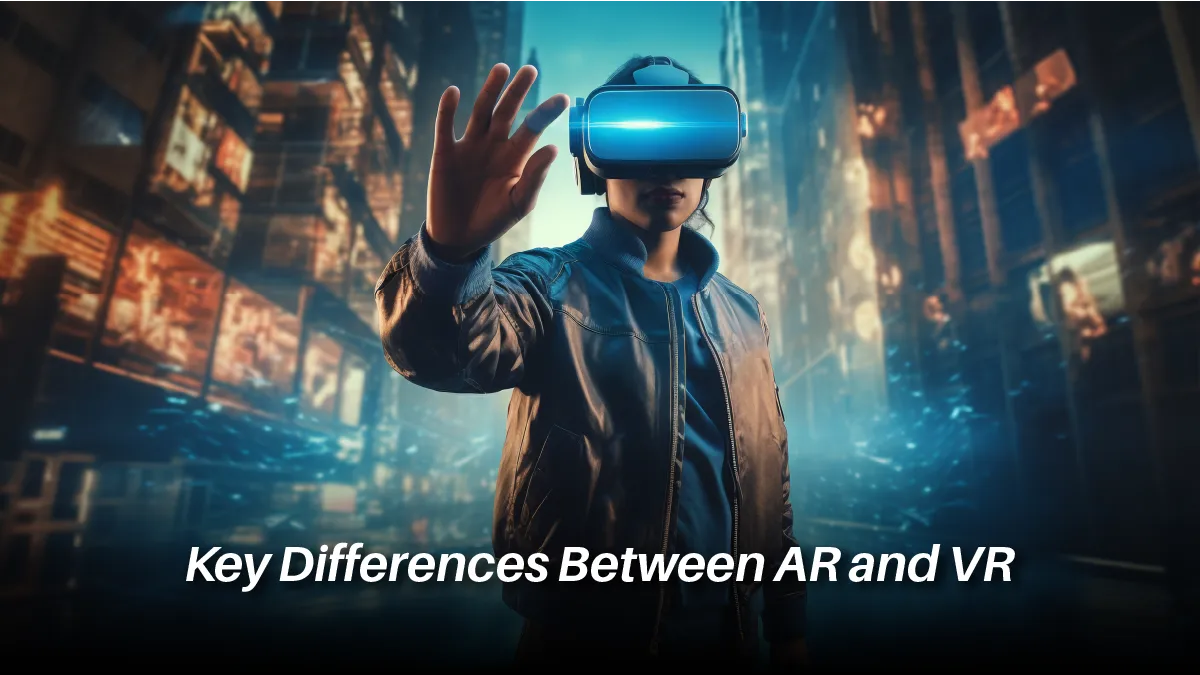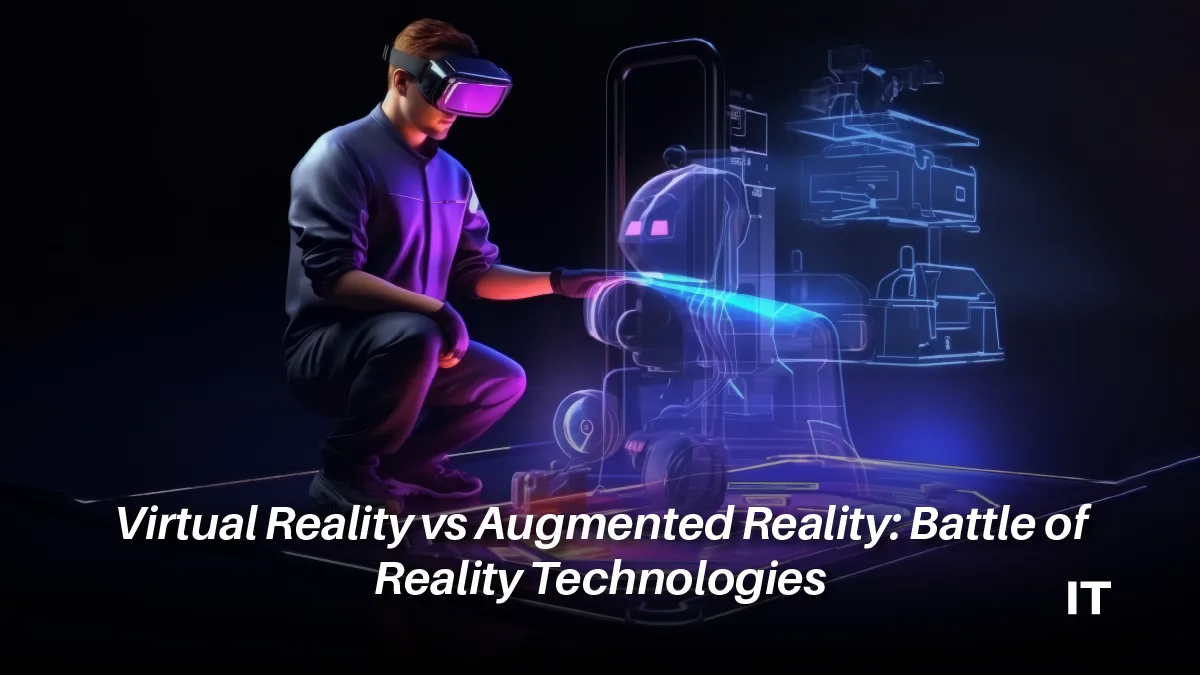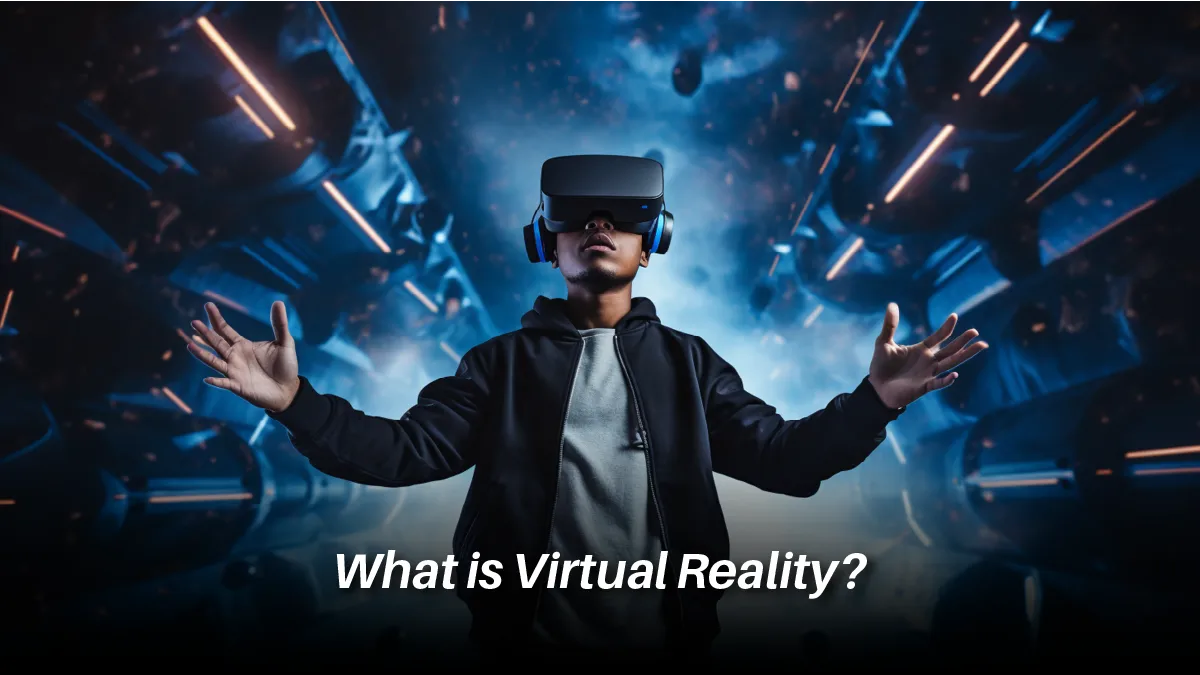What if you could escape to another world or make your surroundings come alive in unexpected ways? VR and AR are making the impossible possible. They are changing how we experience reality. The subject of virtual reality vs augmented reality is drawing a lot of attention. Augmented reality keeps you in the real world. It adds a digital layer that enhances your surroundings. In contrast, virtual reality takes you to a new world. The system takes the reins, and you’re along for the ride. Both technologies aim to improve user experiences with simulated environments. But, they work on different principles and serve different purposes.
This blog explains the key differences of virtual reality vs augmented reality. This knowledge is vital for using these technologies effectively across industries.
What is Augmented Reality?
By integrating digital features in real-time, augmented reality improves our perception of the physical environment. This is frequently accomplished with smartphones, tablets, or smart glasses. AR gives consumers better experiences and insights by superimposing sounds, images, and other content onto the real world.
Real-World Applications of AR:
- Simplifying Home Upgrades: Augmented reality opens a window to your home’s potential. Picture your furniture perfectly in any space. Experiment with a rainbow of wall colors and paint options. Make informed choices before you hit ‘buy’! Transform your decor dreams into reality with just a tap.
- Furniture Shopping 2.0: Through the IKEA Place app, users can visualize furniture in their home space in real time, thanks to Apple’s ARKit technology.
- Try Before You Buy: Welcome to the age of augmented reality, where your shopping experience gets a thrilling upgrade. This cutting-edge technology is adept at converting mere window shoppers into devoted buyers. Retail giants like Sephora, Macy’s, and Wayfair are investing heavily in AR, recognizing its game-changing potential. Imagine effortlessly trying before you buy, as digital images seamlessly blend with the real world. Adidas is stepping up the excitement with their virtual try-on feature for shoes, letting customers explore styles from home. It’s not just shopping; it’s discovering with every click.
- Gaming Meets Reality: This popular AR-based game places virtual Pokemon characters in real-world locations, allowing users to catch them through their smartphone cameras.
Also Read: Why Augmented Reality Might Be the Next Big Thing
What is Virtual Reality?
VR is a passport to captivating realms where reality bends and warps. With specialized headsets and controllers, users plunge into simulations that tickle their senses. Engaging sight, sound, and touch, VR crafts a tapestry of experience that’s both thrilling and transformative. It shines brightest in gaming, training simulations, and experiences demanding total immersion.
Real-World Applications of VR:
- Automotive Innovation: Companies like BMW and Jaguar leverage VR for design evaluation and virtual testing, reducing the need for physical prototypes.Virtual reality experience packs are rolled out to retailers , allowing all customers to have a virtual tour of the new vehicle that the company launches. Through a VR headset, they can experience a life-sized model.
- Tourism Transformation: VR allows users to virtually explore destinations, offering a more engaging and emotional experience than traditional marketing materials.
- Interior Design Evolution: Designers use VR to showcase furniture and color schemes, giving clients a more realistic view of how their space will look.
- Fitness Revolution: VR has been integrated into fitness routines, making exercises more engaging and offering users a new way to experience workouts.
As we deepen our understanding on virtual reality vs augmented reality, let’s take a closer look at the key distinctions between the two.
Key Differences Between AR and VR
The debate of virtual reality vs augmented reality comes down to how users interact with their environment.
- Accessibility: AR is more accessible since it typically requires only a smartphone or tablet to interact with digital content, while VR requires specialized equipment like headsets.
- Digital Environment: AR enhances the real world by adding digital layers to it, while VR immerses users in a completely digital world.
- User Interaction: AR allows users to interact with both the real and virtual world simultaneously, while VR offers an experience where the user is fully immersed in a digital environment.
Future Perspectives
The debate over virtual reality vs augmented reality explains different approaches to user experience. Virtual reality is fully immersive. So, it’s perfect for gaming, simulations, and training. Augmented reality enhances real-world experiences. It overlays digital info on our surroundings. As both technologies evolve, we can expect hybrid experiences. They will blend virtual and physical realities for a more engaging user experience. Industries must understand the difference between virtual and augmented reality. It will help them create innovative solutions. These solutions will change how we interact with the world and each other. The future of AR and VR is promising, as we uncover new possibilities for both technologies.


































